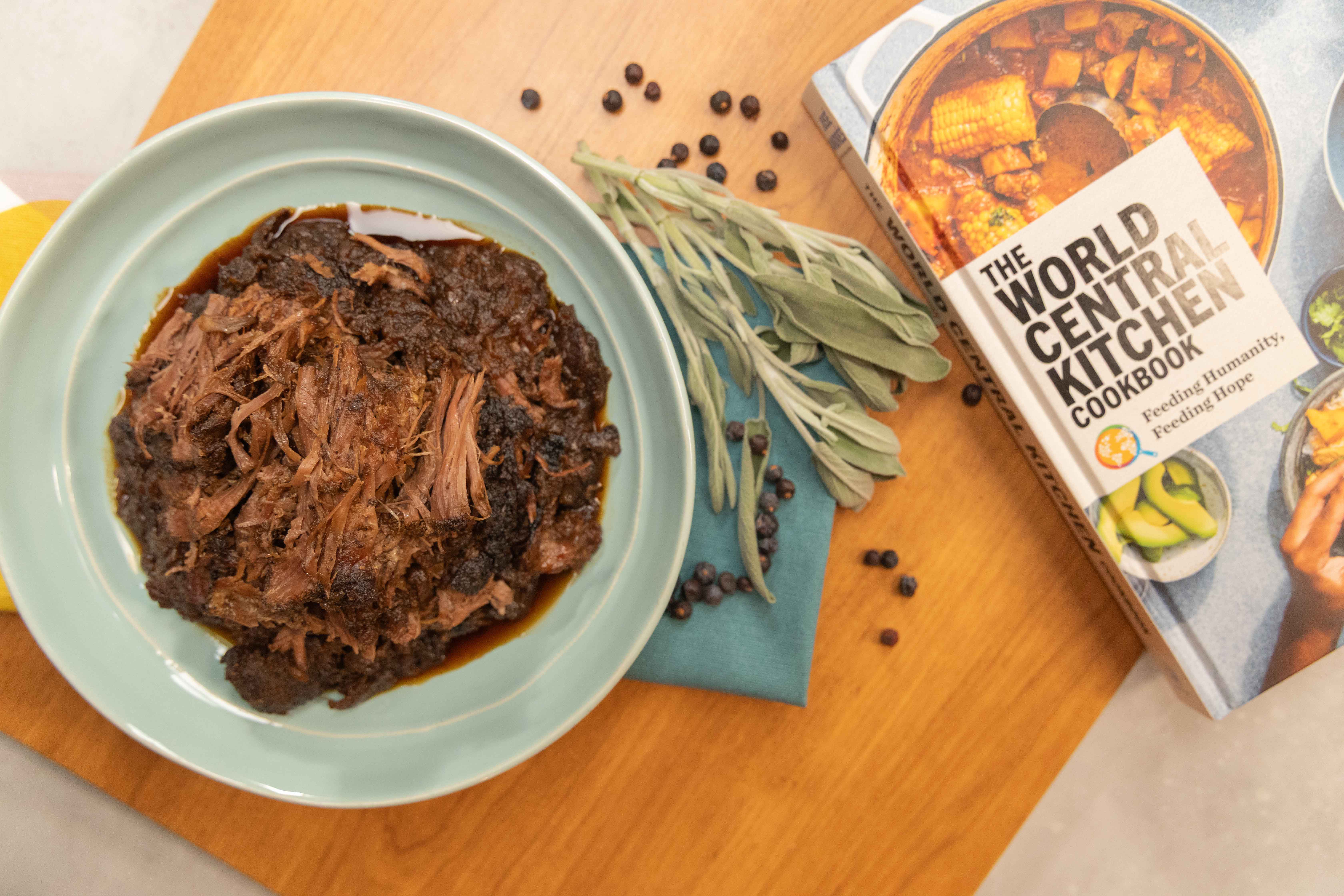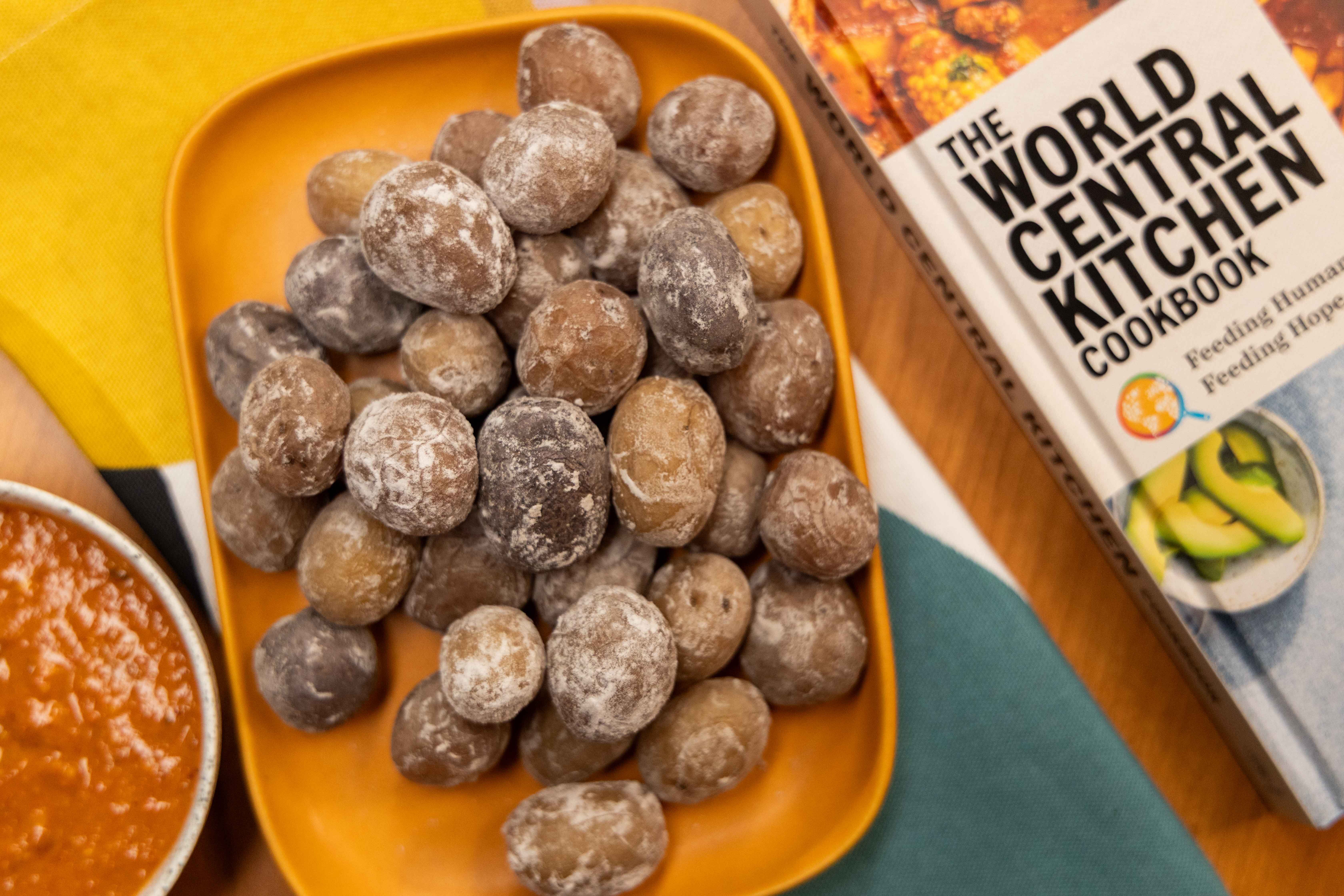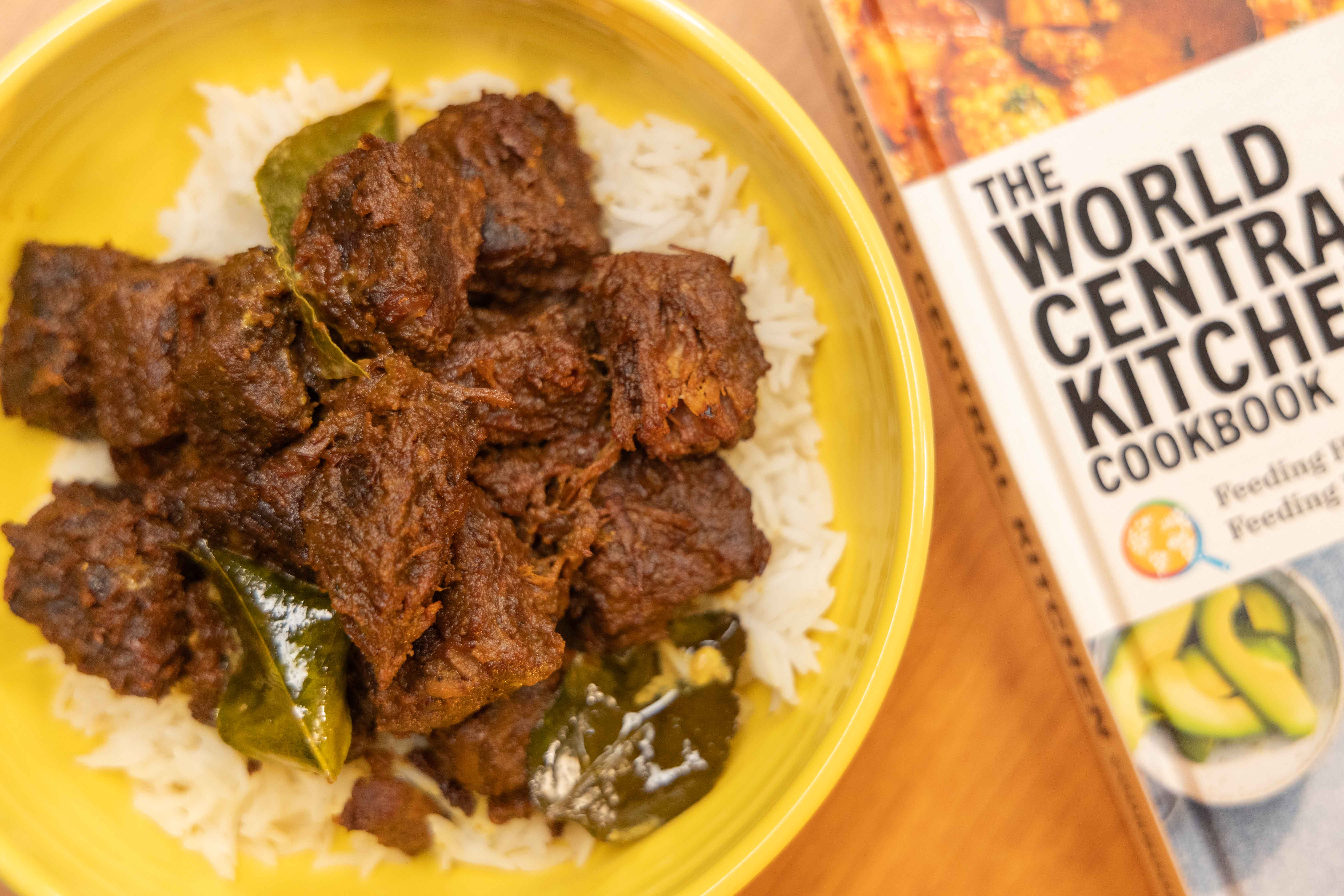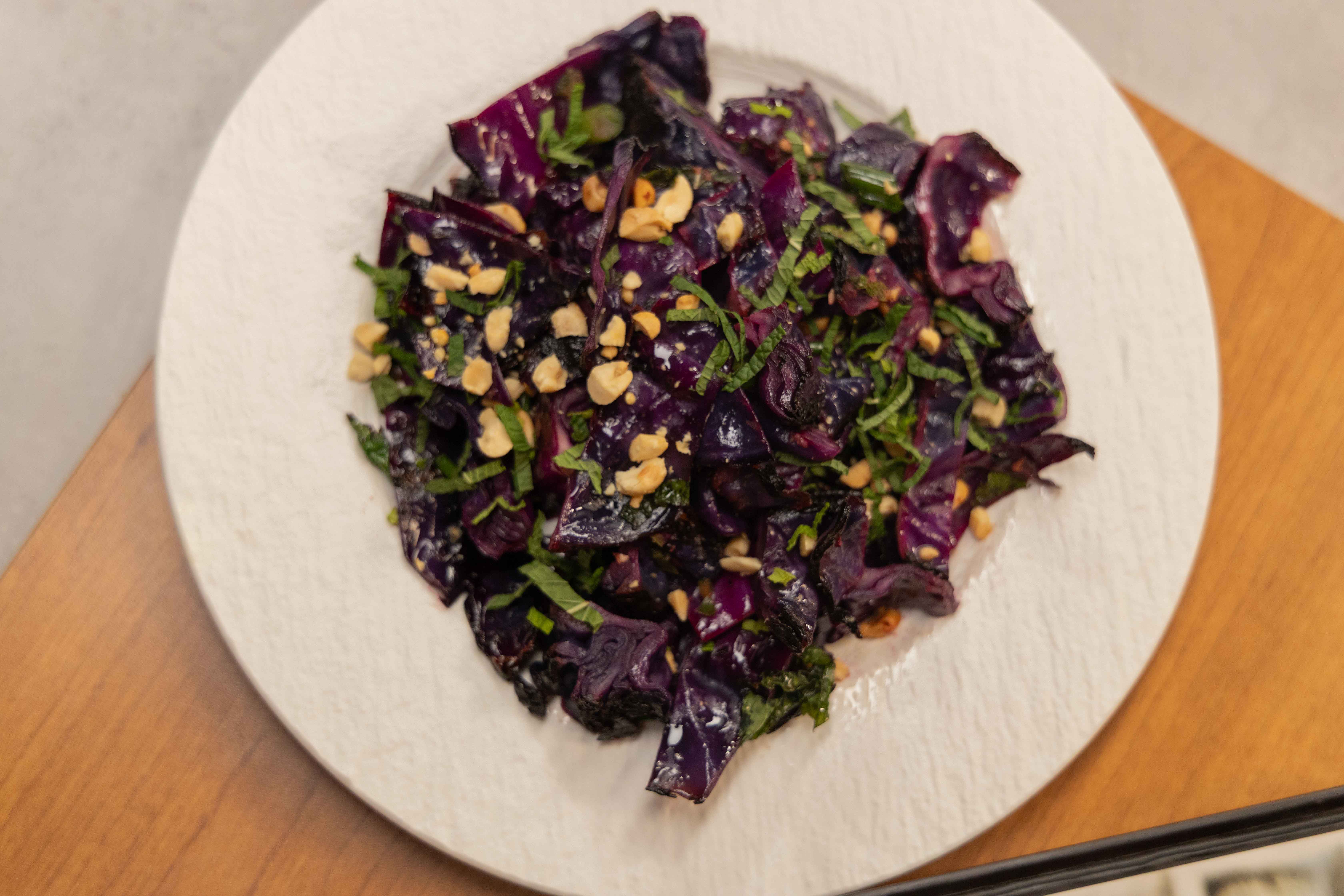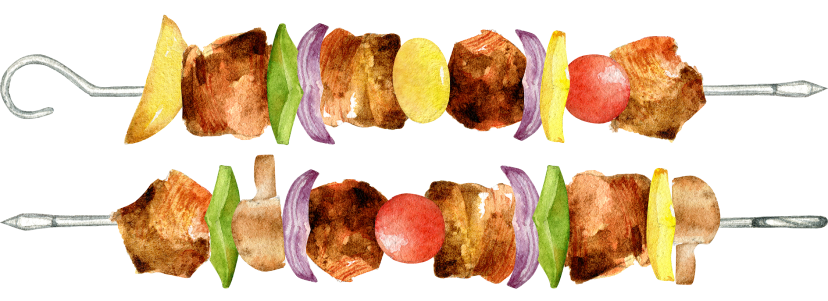
Going back centuries, and across all cultures, people have had to find ways to use lesser, tougher cuts of meat. Typically this is done by marinating and braising. In Italy, they came up with something called porchetta—a sweet, tender, slow-roasted pork belly. The four-hour roasting time crisps the skin to achieve what’s known as “crackle.” Our little secret to get it “crispified” is to rub some baking powder into the skin before it goes into the oven. Definitely not a diet dish, and oh-so-good.
Serves a very large group (15 or more)
Ingredients
- 1 whole pork belly, boneless with the rind on, about 12 pounds (5.4 kg)
- 2 tablespoons (30 mL) black peppercorns
- 2 tablespoons (30 mL) fennel seeds
- 12 cloves garlic
- Zest of 1 orange
- Zest of 1 lemon
- 1 tablespoon (15 mL) red chili flakes
- 3 tablespoons (45 mL) finely chopped fresh rosemary, sage, thyme, and oregano
- 1 tablespoon (15 mL) kosher salt
- 2 teaspoons (10 mL) baking powder mixed with 2 tablespoons (30 mL) kosher salt, for the crackle
- Kitchen twine
- Large roasting pan with a rack
Directions
- Place the pork belly skin side down on a large cutting board. Using a sharp chef’s knife, score the flesh at an angle using strokes about 1 inch (2.5 cm) apart. Rotate knife 90 degrees and score again, creating a diamond pattern in the flesh.
- Toast the peppercorns and fennel seeds in a small skillet over medium-high heat until lightly browned and aromatic, about 2 minutes. Transfer to a spice grinder (or coffee grinder set aside for spices) and grind until roughly crushed. Add the garlic, orange and lemon zest, and chili flakes, and blend. Transfer to a small bowl, and stir in the herbs and a drizzle of olive oil to form a rough paste.
- Season the pork liberally with the salt, then rub the paste all over the top of the belly, making sure to get into all the cracks and crevices.
- Cut 5 to 6 lengths of kitchen twine long enough to go around the pork belly. Roll the belly into a tight log and leave it seam side down, and set it aside. Lay the kitchen twice on the cutting board at 1-inch (2.5 cm) intervals. Place the belly seam side down on top of the twine.
- Working from the outside toward the centre, tie up the roast tightly. At this point, if you think the roast is too large and unwieldy, carefully slice it in half with a sharp chef’s knife.
- Rub the baking powder and salt mixture over the entire surface of porchetta. This will help in the blistering of the skin for the treasured crackling. Wrap tightly in plastic wrap, and keep refrigerated overnight at the very least, and up to 3 days.
- Adjust the rack to the lower-middle position of the oven, and preheat to 300°F (150°C).
- Place the pork on the rack in the roasting pan. Roast, basting with the pan drippings every 30 minutes, for about 4 hours or until the internal temperature of pork reaches 160°F (71°C) (or 150°F/66°C if you desire porchetta to be medium instead of medium-well).
- If the skin hasn’t completely crisped up, increase the oven to 400°F (200°C). It may take up to 15 minutes for the skin to be completely crispy and blistered; watch closely. (You can also remove the roast from the oven, letting it rest tented with foil for up to 1 hour before finishing it in the oven to crisp up the skin.)
- Remove the roast from the oven, transfer to a plate, and cover loosely with aluminum foil. Let rest for at least 20 minutes before slicing. Slice into 1-inch-thick (2.5 cm) rounds using a serrated knife, and serve.

